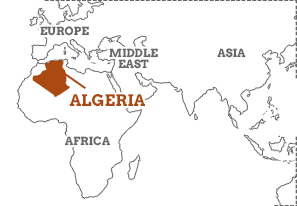Algeria commands respect. Africa’s largest country has a Mediterranean coastline that stretches for over 1,600km, the south of the country is given over to the even larger expanse of the Sahara Desert, and there are fantastic landscapes between the two. Train rides take you from Algiers to Oran whilst local guides and drivers can explain the background to historic UNESCO World Heritage Sites, such as Timgad, Djémila and the incredible Kasbah of Algiers.
![]()
Experience an ancient world where white washed buildings, minarets, mosques and markets overlook the Mediterranean and deserts drift on an endless tide of time
![]()
The Romans left their mark on Algeria, as did the Ottomans; however, it’s the current inhabitants that might leave the biggest impression on travelers. The country has co-existing Berber, French, Arab and Islamic influences, traditional street stalls proffer fantastic local produce grown on the fertile coast, and you may spend time with the Tuareg people in the Sahara. The civil war (1991–2002), and more recent anti-government protest, have ensured that Algeria is little visited and more difficult to enter than its neighbours; tour groups are often accompanied by official police escorts. Yet Mahgreb hospitality perseveres, even in an unforgiving climate.


